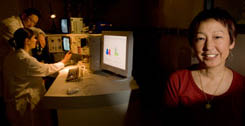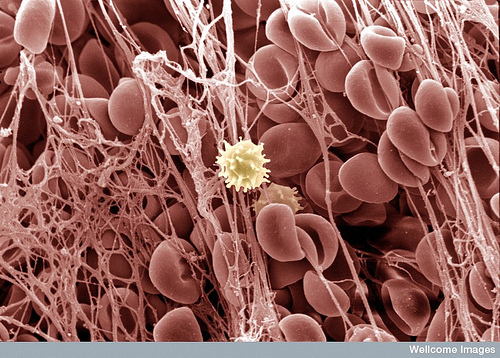February 1, 2013 at 12:26 pm
Published by Stanford Blood Center
By Julie Peachey, Social Media Manager, Stanford Blood Center
On Thursday, January 31, Stanford Blood Center staff celebrated the grand opening of their new Menlo Park donor center, along with a few special guests. Below are some pictures capturing the momentous occasion.

January 29, 2013 at 1:27 pm
Published by Stanford Blood Center

Judith A. Shizuru, MD, PhD, Associate Professor of Medicine, Stanford University School of Medicine - Blood and Marrow Transplantation, will discuss the topic of stem cells at our upcoming Café Scientifique event on Thursday, January 31.
January 25, 2013 at 1:11 pm
Published by Stanford Blood Center
By Julie Peachey, Social Media Manager, Stanford Blood Center
We are critically low in type O-negative blood and are asking for those eligible, to donate within the next couple of weeks. Unusually high demand has depleted O-negative inventory at local hospitals and across the Bay Area, making it difficult to import blood as well.
January 18, 2013 at 10:19 am
Published by Stanford Blood Center

By Billie Rubin, reporting from the labs of Stanford Blood Center
Here's a great picture of red blood cells, platelets, fibrin, and a white blood cell making a clot. There's a lot of activity that goes on in a little cut. The pretty cell in the middle is the white blood cell, waiting to pounce on any bacteria that sneak in through a cut in your skin. You can't see the platelets well in this picture but they are in there, sticking together with the fibrin to make a sort of scaffold that traps red cells. Together they all form the clot and keep your blood nicely contained.
January 14, 2013 at 4:51 pm
Published by Stanford Blood Center

Craig Nelson is one of an elite few who have reached the 500-donation milestone with SBC. We spoke to Craig about the motivation behind each blood donation:
January 9, 2013 at 10:25 am
Published by Stanford Blood Center
By Lia Steakley, Writer for Stanford School of Medicine's Communications & Public Affairs Department This article was adapted from material provided by the Stanford University School of Medicine. Click here to be taken to the original article.
Half of the world's population, some 3.3 billion people, are at risk for malaria. In an effort to reduce the spread of malaria, an international team of researchers is using cell phone data to determine how human travel affects the transmission of the disease and identify regions where imported infections originate.




